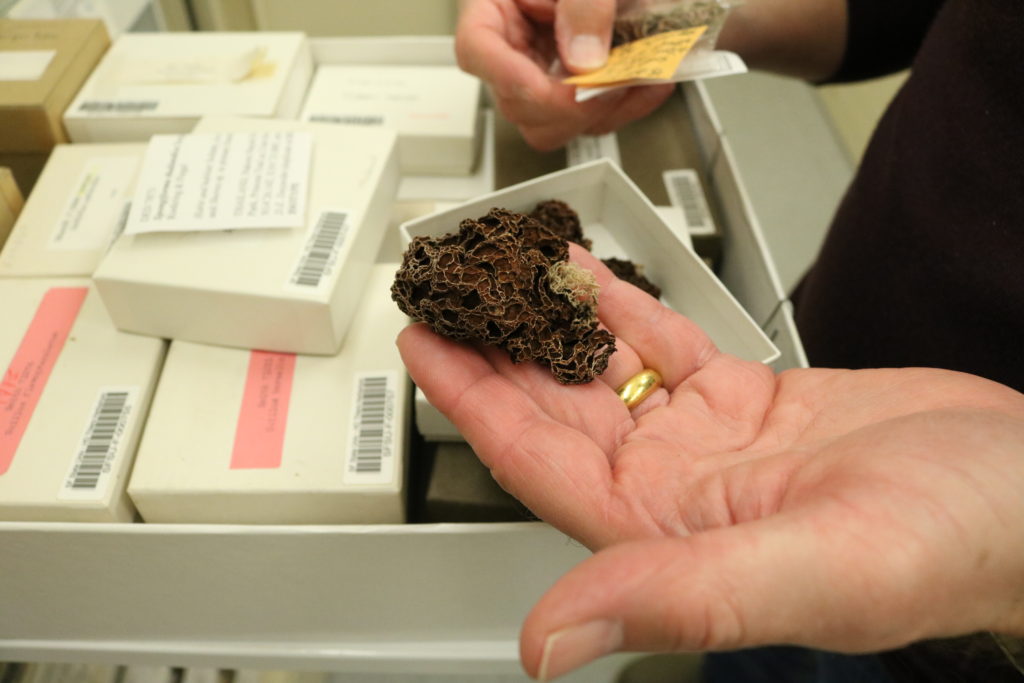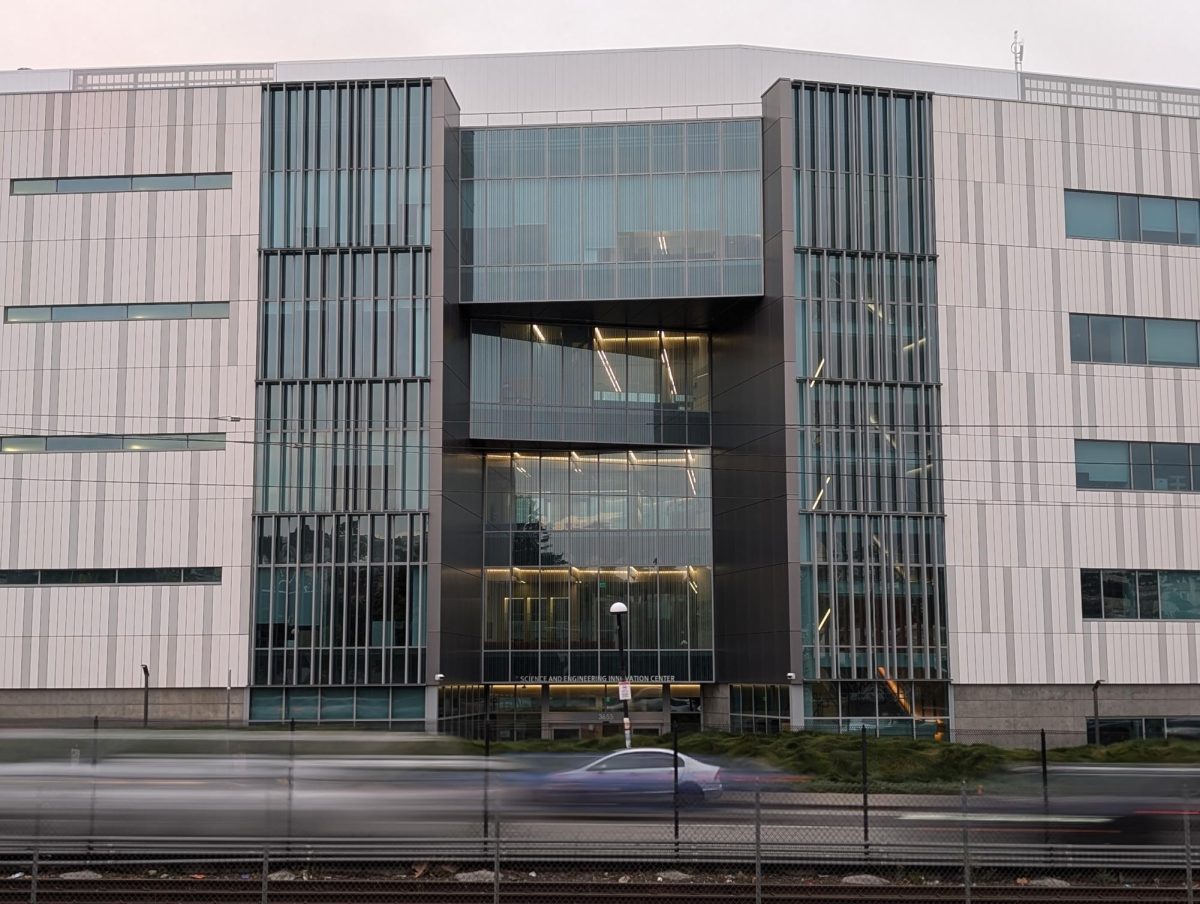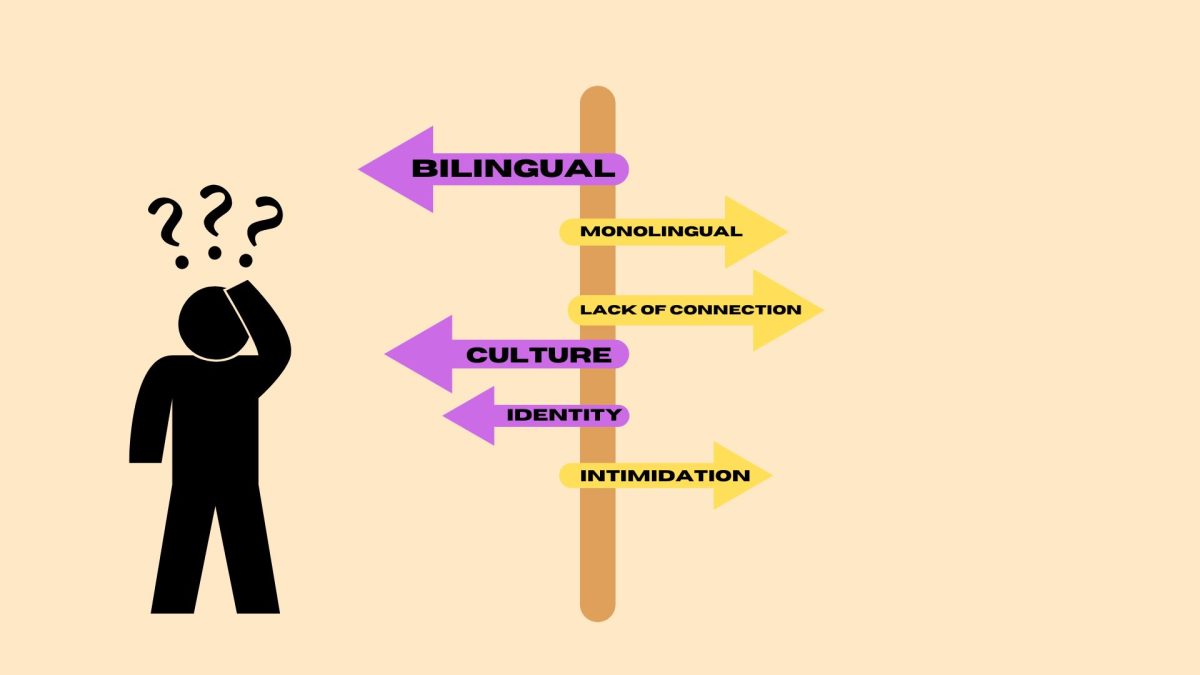Director and curator of the Harry D. Thiers Herbarium Dennis Desjardin holds the type specimen for Spongiforma thailandica, one of more than 115,000 plant, fungus and lichen specimens stored in the herbarium. (CODY MCFARLAND/Golden Gate Xpress)
The Harry D. Thiers Herbarium has been called the best in the West, irreplaceable and an endangered beast by those familiar with it.
For those unfamiliar, the natural history collection on the fourth floor of Hensill Hall is an invaluable resource for studying ecology, evolution and climate change, a DNA library housing a diverse array of dried plant, fungus and lichen specimens from across the globe, some dating back to the 1800s.
“Natural history collections like an herbarium are our single best resource to sort of understand and conserve life,” said Andrew Wilson, an SF State alumnus and assistant curator of mycology at the Denver Botanic Gardens.
“Whenever somebody has a conservation question, whenever somebody is worried about climate change and the effects that might have on organisms, without natural history collections, we would not be in a capacity to address any of those problems.”
Herbaria, or plant collections, are also essential to taxonomy and the naming of species. By housing type specimens that are tied to a named species, they provide a foundation for subsequent researchers to relate other specimens to that type and figure out where undescribed species fit on the phylogenetic tree.
According to Dr. Wilson, the Harry D. Thiers Herbarium differs from other herbaria in the country in its vast and diverse collection of fungi.
“It’s a fantastic collection — it’s irreplaceable in a lot of ways,” he said. “I would argue [that in] the state of California the Harry D. Thiers Herbarium is the single-best mycological collection in the entire state.”
Wilson and Brian Perry, alumnus and associate professor of biology at Cal State East Bay, both describe it as a legacy collection, beginning with the contributions of Dr. Thiers and continued today by Dennis Desjardin, mycology professor and the herbarium’s director and curator.
“I would say, especially for Pacific Northwest and West Coast fungi, it is the foremost collection in the world,” Dr. Perry said. “And then what else makes San Francisco State so unique is that Dennis has done so much work around the world that it’s also probably the largest collection of fungi from Hawaii, Indonesia, Thailand and now from equatorial Africa.”
With the impending retirement of Dr. Desjardin, colleagues near and far are optimistic that SF State will continue the legacy by hiring someone like Desjardin— a taxonomist who understands the value of collections-based research.
“I think there’s almost a renaissance of appreciation for collections-based research,” Perry said. “We’re sort of going through a period where folks are going back and understanding the value of collections, and that there’s still a lot of information contained in these collections
that has yet to be gleaned.”
According to Jackie Shay, another of Desjardin’s former graduate students, the significance of an herbarium is multi-faceted.
“It offers an incredible resource not heavily available on many campus environments, and it provides access to biological history,” said Shay, who is pursuing her Ph.D. in quantitative and systems biology at UC Merced. “The Herbarium is one of the best resources available — it gives students the ability to see science through time. It’s harder to get someone to open a book, but it’s easier to get them excited when they’re holding a 100-year-old specimen.”
Perfectly dried and neatly stored in rolling filing cabinets known as compactors, each specimen in the herbarium comes with a detailed write-up indicating the exact location, date and time of collection. While this information is actively being compiled in a database where it can be stored and studied digitally, the unique significance of herbaria is in their housing of these specimens, giving students and scientists a tangible piece of data to further study and access for years to come.
The last time an official count was made in 2006, there were 113,021 total specimens — 92,144 determined species and 20,877 undetermined.
Thanks to the work of Desjardin and his students, thousands more have been added in the 13 years since.
“Natural history collections, their value is because they’re historical,” Wilson said. “They don’t need to change, they just need to be. They just need a place.”







